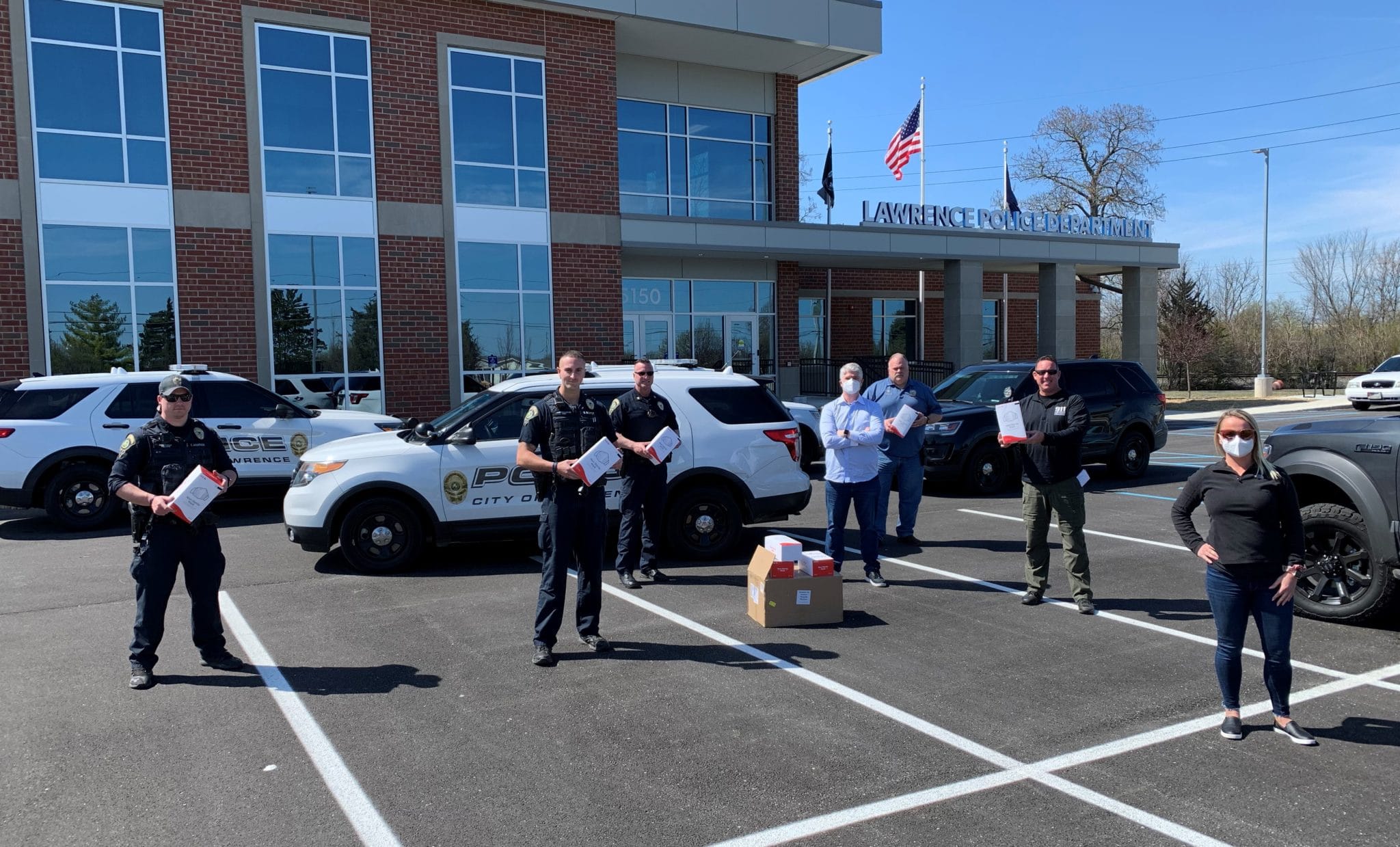An Indiana law enforcement department has suspended police administration of naloxone, the opioid overdose reversal medication, until the end of the coronavirus pandemic due to concerns over possible transmission of the virus to responding officers. Overdose reversals will be left to emergency medical services.
“It’s all about officer safety during this public health crisis,” Dan Hofmann, the police chief for Lawrence, a city in Marion County outside of Indianapolis, told Filter. He said that his department was the first in the region to adopt such an approach, and that the Indianapolis Metro Police Department (IMPD) has followed suit. Filter was unable to reach the IMPD press representative at the time of publication.
At least one person has reportedly been denied an overdose reversal since the directive took effect on March 19. “[B]ecause of coronavirus, police in Lawrence are not allowed to administer Narcan anymore and what we had was what saved him,” a participant of #Shiphappens, an Indiana-based naloxone distribution organization, texted to Antonia Sawyer, the organization’s founder, on April 7.
Filter is awaiting data from Hofmann on the number of overdose responses since the directive, and this article will be updated.
Hofmann said he didn’t take the decision lightly, consulting Indianopolis’s emergency medical services director. But for him, it’s necessary. “When an officer administers Narcan to someone, that requires, just by the very nature of the experience, a very up-close and personal physical contact between the officer and the person experiencing an overdose. And what often happens when someone wakes up after a Narcan administration is they are coughing or sneezing or expelling microscopic particulate matter into the air,” said Hofmann. “And that is right where an officer[‘s] face might be.”
Existing scientific evidence does not support Hofmann’s claim, the states’s medical director of emergency medical services warned in a March 27 press release. First noting that “there is little to no literature related to aerosol generation from any intranasal medication administration,” Dr. Michael Kaufman explained: “Intranasal administration is not likely to be aerosol-generating as the aerosol is created by the device with the drug going inward and not the patient sneezing or coughing outward until after the administration is complete.”
Still, the chief believes emergency medical responders are better suited for the job. “Our medics will be fully equipped with face shields, gowns, respirators.” But he also said, “Even with PPE, such as a mask, that could potentially be a deadly situation for the officer if that person is COVID-19 positive.”
Kauman recommends that responders should “[c]ontinue to administer intranasal naloxone to victims presumed to be suffering acute opioid overdose” and “[a]fter administration, back away a distance of at least six feet unless appropriate level PPE is available.”
An April 1 video from Lawrence public safety leadership on their ability to respond during the pandemic.
The Indiana Naloxone Project understands the need to limit the spread of the coronavirus among officers. “We in harm reduction believe it is important that law enforcement have access to the personal protective equipment (PPE) to feel confident in responding to all needing their assistance,” they told Filter.
But the Project added that “until [police] receive proper PPE, their choice to not respond during the pandemic leaves a huge void that our grassroots harm reduction organizations will attempt to fill.”
Across the state, access to naloxone is still limited—or “dismal” as Kassandra Botts, executive director of Indiana Recovery Alliance (IRA), characterized it in an interview with Filter in February. Even as Sawyer works to close access gaps by shipping the medication, IRA, the largest naloxone distributor in the state, is “underfunded, and [has] to resort to things like selling merchandise to fund our effort to save lives,” Botts said.
Unlike some other jurisdictions, Marion County is not seeing a downward trend in overdose deaths. The latest provisional state data reveal that the county was hit in March 2019 with highest number of fatalities—48—that it had suffered in a given month between 2016 and the end of September 2019.
“We respond to overdose runs everyday in our city,” said Hofmann, recognizing the role that police use of naloxone plays in reviving people who use drugs. “I have been for some time a very big proponent of officers carrying the life-saving drug naloxone. We know first hand that the drug reverses the effects of overdose instantly and we have had countless instances where life has been saved.”
Updates, April 9, 2020: A previous version of this article misattributed Indiana Naloxone Project’s quote to Sawyer. The article has also been edited to better communicate that Indianapolis’s directive has not yet been confirmed, and to add Dr. Kaufman’s comments.
Photo of Lawrence police officers posing with donated PPE on April 2 by Lawrence Police Department via Twitter




